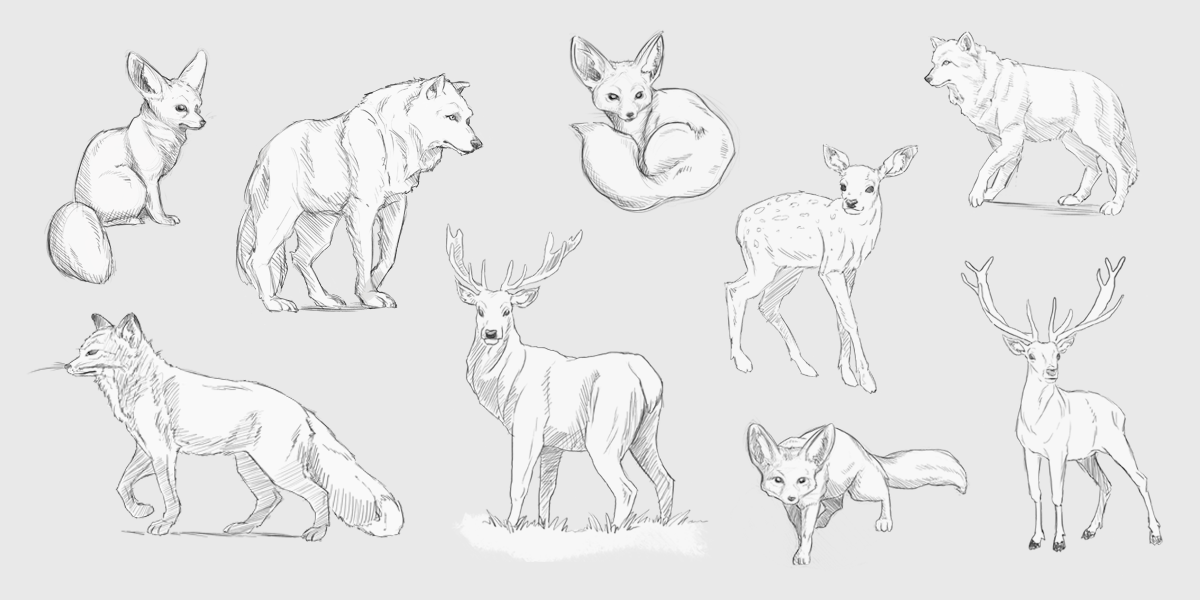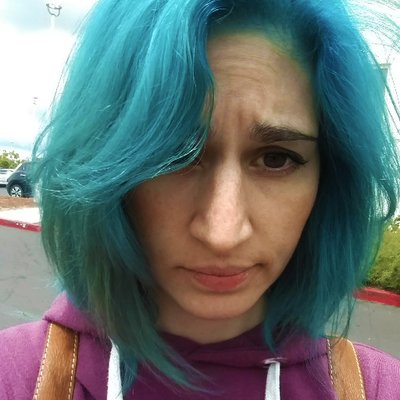
I believe that sketching is the most important thing you can do to become an artist. Without strong sketching and drawing skills it’s almost impossible to create professional work. Line work can tell a lot about how artists understand the world around them, how accurately they describe light and shadow and how they shape and compose.
I started taking the time to sketch every day in the morning right before work, more than a year ago, and I decided to analyse how this exercise has been good for me.
Everything starts with observation
My go-to approach when drawing was to decide a subject, pop up a blank document and just draw for hours.
Most of the times the end result was totally different from the one I had in mind, and it was bugging me. The solution was to simply work with references.
I was then spending most of the time looking at the subject than actually drawing. And my works improved a lot because of this.
New first rule: always look before drawing.
Why is that?
Humans think and see in three dimensions but drawings are 2D, so directly representing the world around us on a paper is tricky! The brain synthesizes shapes for us to help us storage a lot information with the minimal effort possible.
Drawing on the other hand is a tool created to resemble reality in the best way possible, so we need to actively work against our brain and use as meaningful and accurate details as possible.
Understanding this process of synthesis is the key in choosing the right details when drawing, literally reverse-engineering the brain.
Lighting has a big part in this as the pictures our eyes can see are actually just light. The way it interacts with the world (bouncing around) tells the brain a plethora of information: materials, sources, shadows, temperature and so on.
Bottom line: the more I learn to observe, the more my drawings improve.
This reminds me of an awesome video by SmarterEveryDay on how talking backwards is much more complicated than reading backwards, as you need to reverse-engineer the phonetic sounds.
Perseverance and repetitiveness
When I started approaching 2D art I just wanted to create beautiful scenes, and I wanted to learn everything involved altogether. But the brain can only process so much information at a time and the risk is to stall and overwhelm yourself.
Just as with any other complex ability, it takes time and practice to master it. The key is to break it down in smaller actions/skill and learn them one by one.
Each of this smaller piece requires practice, and that means repetitiveness, even if it sounds boring.
You can only learn to draw a proper horse by drawing thousands of them and observing even more.
This is why I started keeping digital and physical sketchbooks.
This has helped me embracing mistakes. "I made one that looks off, no problem, down with another one". And another one, until you get it right.
Mistakes are a necessary evil. The more errors you become aware of, the more things you can improve.
It's more an exercise for the brain than for the hand.
Experimenting styles and techniques
Repetition quickly led to boredom. The only way to keep on going was to introduce small enough variables to make it different while still repetitive.
On the long run I noticed I started to get out of my comfort zone, experimenting on all sort of levels.
I used to draw almost exclusively animals and human characters. I gradually switched towards human-made stuff such as vehicles and machines, expanding my visual library. I used to be scared of drawing this stuff, too afraid to make mistakes.
After years of Photoshop I suddenly switched to Krita, a great Open Source software (and much recommended!). Even the small differences in the main tools (such as the lasso, blending modes and brushes) changed my overall approach to digital painting. I also try to constantly change the brushes I use to try different rendering techniques, to find right one for the job.
It's not only about work
Setting a high bar of expectations keeps me motivated, but it also puts a lot of pressure on my shoulders, having to constantly improve and wanting to get something out every time.
I used to think I needed to have something to show for everything I drew. If it wasn't good enough for my portfolio or social media it wasn't good enough at all. This made me forget about how I enjoy drawing in itself, just like when I started when I was a kid.
Looking back now, my best work was done without work-related pressure, as my mind could float and take the time it needed.
It's important for me to always remember the fact that I just enjoy drawing.
It all started as a passion. And as any passion, it must be cultivated.
Developing creativity
I like how these right-before-work sketches are usually called warmup sketches.
Just like in sports, you cannot dive into something from a cold state otherwise your performance will be negatively affected. The brain is just like any other muscle, creativity doesn't simply flow at request, you need to warm it up.
Furthermore I noticed that the warmups help me switch my attention from everyday/private life to work. They help me reduce my attention residue.
I tend to approach them with autopilot mode. If I start thinking about them too much I simply create new residue and they lose purpose.
Sometimes looking at my warmups I find something worth following up and further develop them.
Creativity isn't just a switch you can turn on, several factors come into play. One of those is your subconscious.

This has been my experience so far. I'll surely notice new things as I continue and maybe I'll update this post or write a follow up.
What are your experiences? Comments are feedbacks are welcome!
